NRM at 34: Energy and Infrastructure
Jan 22, 2020
Energy and Infrastructure key development priorities since 1986

2020: The expected oil jobs are here
BY MARTIN KITUBI
The oil and gas sector is finally coming to the take-off stage. With the Final Investment Decision (FID) for the oil pipeline project expected this first quarter of 2020 (between now and March), what is on the minds of several Ugandans are the oil jobs.
According to projections, an estimated 190,000 jobs will be created by oil and gas development. The projections include the 160,000 jobs that were highlighted in the 2013 Industrial Baseline Survey (IBS) and over 29,000 additional jobs in the Workforce Skills Development Strategy and Plan (WSDSP).
 The oil and gas sector skilled and artisan job opportunities are classified into four key levels
The oil and gas sector skilled and artisan job opportunities are classified into four key levels
The IBS survey was conducted by China National Offshore Oil Corporation (CNOOC), Total and Tullow Oil on how Ugandans will benefit from the sector. The WSDSP was developed by both education and energy ministries and funded by the World Bank under the Albertine Region Sustainable Development Project (ARSDP).
The strategy and plan were launched on November 15, 2018, by President Yoweri Museveni at Hoima Booma grounds. CLICK HERE FOR MORE ON THIS STORY
Uganda Railways boosts import, export trade
BY OWEN WAGABAZA
In September last year, Uganda Railways Corporation (URC) embarked on a five-year plan to revive the meter-gauge railway.
The $340m plan is being funded by the European Union. This is in accordance with the National Resistance Movement manifesto, which focuses on upgrade of the country's railway system from the traditional one-meter- wide system to a faster and modern one-and a-half-meter wide SGR.
 Cargo trains help one save 50% of the transport cost
Cargo trains help one save 50% of the transport cost
This is in addition to the development of the Greater Kampala Metropolitan Area Light Rail Mass Transit System. Uganda Railways Corporation, which took possession of the concession assets from the Rift Valley Railways Corporation (RVRC) in 2018 and resumed operating the meter-gauge railway system in Uganda, owns 1,200 cargo containers, which had remained redundant due to lack of a functional meter gauge system.
The rehabilitation of the railway line will boost both the import and export markets within the East African region. CLICK HERE FOR MORE ON THIS STORY
Uganda Airlines takes off
BY OWEN WAGABAZA
In 2016, just months after being sworn-in for a fifth term, President Yoweri Museveni, during the Independence Day celebrations in Kiyunga, Luuka district, announced the revival of Uganda Airlines, after a hiatus of 15 years.
In August 2019 Uganda Airlines made its inaugural flight to Jomo Kenyatta International Airport in Kenya.
The national airline started with two Bombardier CRJ 900 aircraft with flights to seven destinations, including Nairobi, Mombasa, Dar-es-salaam, Mogadishu, Kilimanjaro, Bujumbura, and Juba.
In October, two passenger planes were delivered into the country, doubling the size of the fledging airline fleet. This enabled the airline to expand its route network to nine, including Kinshasha in DR Congo, Zanzibar, Asmara, Hargeisa, Lusaka, Harare, Johannesburg, Djibouti and Addis Ababa.
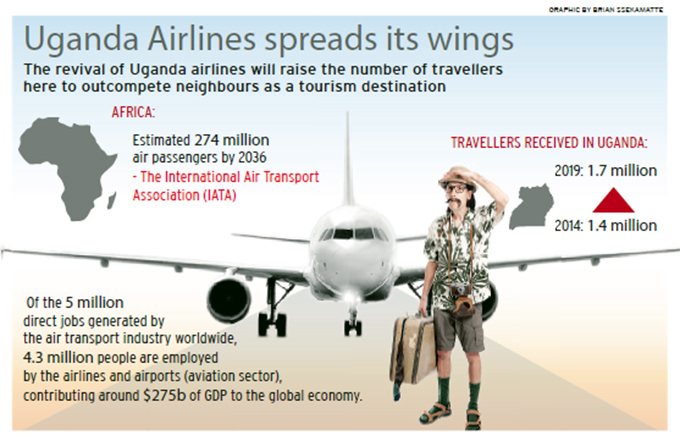
Uganda Airlines expects to receive two Airbus A330 Neo planes soon. The first will arrive by the end of the year, and the second a few months later. These are expected to ply the longer routes.
According to the National Planning Authority, due to the absence of a national carrier, Uganda was losing about $540m annually, in the form of high transport costs mostly resulting from extra charges to passengers moving in and out of Entebbe International Airport. CLICK HERE FOR MORE ON THIS STORY
Roads sector expands, opens production zones
Uganda has overcome past trials and tribulations to become a stable nation with a growing economy that is capitalising on the country's natural advantages and ambitious workforce.
Trade and investment has since sky-rocketed, flying on the wings of a soothing road network connecting the country to its different regions and neighbours.
In 1986, when the ruling National Resistance Movement (NRM) took power, the country‘s public road network stood at a paltry 987km but has since expanded to approximately 140,000km.
"The Government has always focused on building the country's road network, and this has never changed. We shall continue to build roads to facilitate the movement of people and their goods as we grow the economy together," works minister, Gen. Edward Katumba Wamala said.
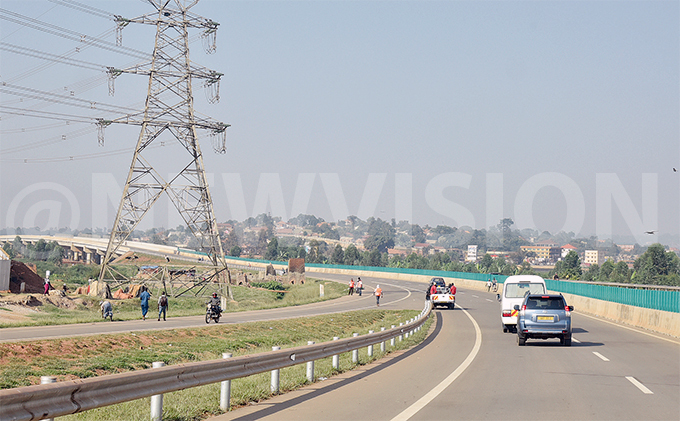 The Kampala - Entebbe expressway which directly links the capital city to Entebbe International Airport
The Kampala - Entebbe expressway which directly links the capital city to Entebbe International Airport
According to Katumba, Works and Transport is one of the sectors that drum up growth and development in the global economy and is extremely crucial for landlocked economies such as Uganda.
He said infrastructure in such an economy serves as a conveyor belt, opening up production zones to markets, while availing the needed thrust for postproduction processes, thus reducing costs for producers and manufacturers in the long run.
Katumba said Uganda's road network has considerably expanded over the last six years, connecting almost 80% of the country to its border posts, while facilitating trade with her regional neighbours.
He said the condition of the roads, especially those under Local Governments, has also improved greatly during the same time, due to consistent monitoring, maintenance, and auditing of road works. CLICK HERE FOR MORE ON THIS STORY
Govt ramps up water transport to boost trade
In 2018, hardware dealer Sam Masumba discovered a relic that would later change the trajectory of his business, growing it 70-fold in a space of only two years.
He had discovered a route, through Port Bell via Lake Victoria to Mwanza in Tanzania, to deliver his merchandise cheaply to the northern Tanzania towns, where demand is ever rising.
Previously, Masumba used both road and private ships to transport his cargo, but was often let down by high costs, regular delays and losses, and, in some instances, damage to his merchandise.
Currently, he said, the business has grown from exporting only 9,000 tonnes of roofing sheets to approximately 24,000 tonnes, albeit cheaply, safely and timely.
"This has been a turning point in our business. Costs have gone down, cargo is safe, we are exporting more, and we can only look to further expansion of the business," he said.
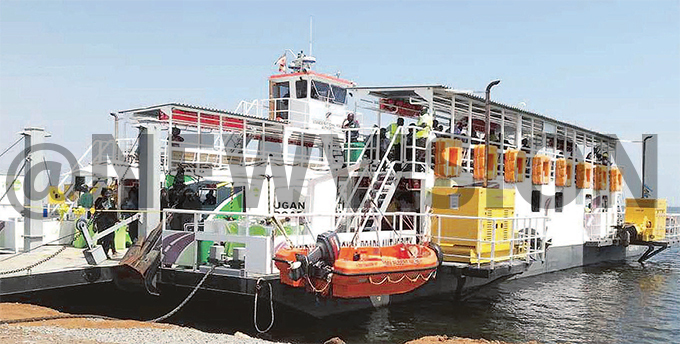 Lake Albert 1 Ferry commissioned which plies the Wanseeko, Pakwach and Nebbi routes has a capacity of 250 passengers and 15 mini-trucks
Lake Albert 1 Ferry commissioned which plies the Wanseeko, Pakwach and Nebbi routes has a capacity of 250 passengers and 15 mini-trucks
The spark in Masumba's business was ignited by the Government's decision to re-open water transport on Lake Victoria, which had taken decades of slumber, following an accident in which two cargo ships collided on Lake Victoria.
On May 8, 2005, MV Kabalega collided with MV Kaawa near Kuye Island, 51 nautical miles from Port Bell and 15 miles from Bukasa Islands, leaving the latter extensively damaged and sunk underwater to date.
Prior to the accident and collapse of the East African Community in 1977, water transport fell under the docket of the EAC Railways and Harbours Corporation (EARHC).
This operated sailing operations between Kisumu in Kenya, Mwanza in Tanzania and Port Bell in Uganda, using rail ferries that carried loaded rail wagons from tracks on the three ports. CLICK HERE FOR MORE ON THIS STORY
Electricity transmission: From 730 to 3,220km
Going down the memory lane in 1948, the former Uganda Electricity Board (UEB) was formed. A year later, the contract for development of Owen Falls Dam, Uganda's first hydro-electricity generation plant, was awarded to M/S Christiani and Nielsen at a cost of £3.6m (about sh17.33b today). The dam was commissioned by Queen Elizabeth in April 1954 and this marked the start of renewable energy in Uganda. UEB went on to operate and maintain the electricity value chain from generation, transmission to distribution segments until 1999 when it was unbundled. By this time, UEB was generally characterised by inefficiencies, including unreliable and poor-quality power supply, lack of adequate internal capacity to manage its large generation, transmission and distribution portfolio, low customer numbers amidst high losses. The board was also operating under a period of political turbulence that curtailed economic performance. The coming to power of the NRM government after a five year guerilla war ushered in a period of relative peace, security and a number of reforms that were aimed at reviving economic activities and growth. CLICK HERE FOR MORE ON THIS STORY
Power rises from 150 to 1,200MW
Uganda's electricity journey has seen the country grow from a single generation plant established in the 1950s to 40 plants. It has grown the generation capacity from 150MW in 1950s to over 1,200MW in 2020.
Before 1949, there was no national generational grid and neither was there an electricity generation plant. Fortunes changed when the Uganda Electricity Board (UEB), an entity that would later manage the country's electricity subsector, was established in 1948.
A year later Owen Falls dam, later renamed Nalubaale, was built and commissioned in 1954, with only four of the plant's 10 turbines running at the time. "This was enough to power Uganda and some parts of Kenya.
 An aerial view Isimba hydro power plant in Kayunga district
An aerial view Isimba hydro power plant in Kayunga district
At the time, there had been earlier generation by specialised generators like the one that was at Lugogo serving Kampala," Simon Kasyate, the corporate and communications manager at the Uganda Electricity Generation Company Limited (UEGCL), says.
The plant's other generation units were subsequently commissioned over a 10-year period until 1964. CLICK HERE FOR MORE ON THIS STORY
Rural electricity connections jump to 10%
BY BENON OJIAMBO
Over the next 10 years, the Government plans to increase access to electricity in rural areas to 26% of the total rural households," President Yoweri Museveni said during the State of the Nation address in 2014.
Museveni's comments came after the launch of a 10-year Rural Electrification Strategy and Plan (RESP) covering the period between 2013 and 2022 aimed to increase access to electricity in rural areas by the Rural Electrification Agency (REA).
REA is a government institution formed in 2001 to facilitate the provision of electricity to rural areas in an equitable and sustainable manner. REA was established as a result of the energy sector reforms which led to the enactment of the new Electricity Act, 1999.
Before the National Resistance Movement (NRM) took over power in 1986, there was hardly any deliberate initiative aimed at electrifying rural areas despite housing the biggest chunk of the population.
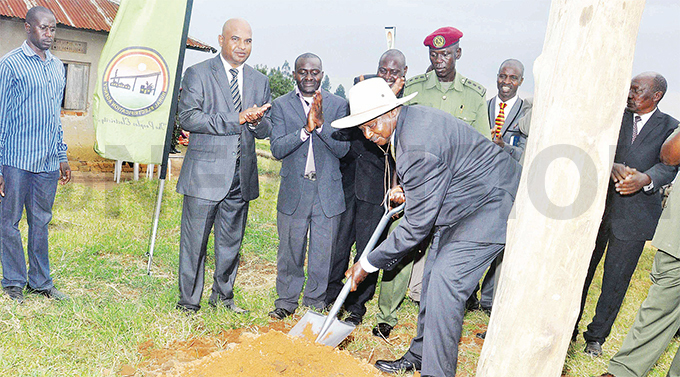 President Museveni launches the rural electrification programme at Rutookye in Mitooma district on August 26, 2014. Photo by Francis Emorut
President Museveni launches the rural electrification programme at Rutookye in Mitooma district on August 26, 2014. Photo by Francis Emorut
Albeit, access to electricity was generally low with less than 10% having access to the utility though majority of it was centred in urban areas.
The electricity reforms Uganda undertook in the 1990s and culminated into the dissociation of the defunct Uganda Electricity Board (UEB) and created REA.
Then, only one in 10 people living in rural areas had access to electricity. According to Godfrey Turyahikayo, REA's executive director, this pattern was because distribution of the national grid was concentrated along major highways to the detriment of villages.
"The national grid network then had a narrow path along the main roads and major towns, reaching some 15% of the population that lived in the urban areas. About 85% of the population was living in rural areas, but only 0.85% of them had access to electricity," he said recently.
The Government then took a deliberate path towards equitable development of electricity distribution lines in the rural areas. CLICK HERE FOR MORE ON THIS STORY
Off-grid solar systems boost government efforts
BY VISION REPORTER
Before 1986, solar electricity in Uganda was a pipe dream. The technology was still being developed in the rest of the world and Uganda was at the bottom of the chain.
Today, Uandans pride themselves in building homes in various places and they end up having scattered homes," Eng. Ziria Waako, the chief executive officer of the Electricity Regulatory Authority (ERA) said early last year.
This, Waako believes, makes it expensive for government to accelerate access to clean energy as extending the national grid would be expensive. This demonstrates the significance of off-grid solutions as a way to supplement government efforts.
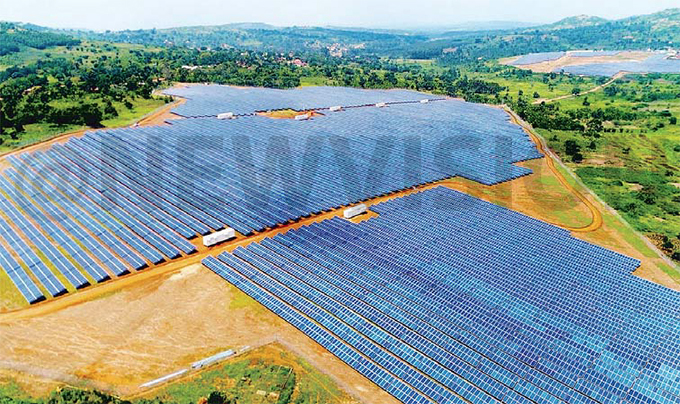 Solar panels in Namayuba
Solar panels in Namayuba
Off-grid electricity services comprise of electricity services based on renewable energy technologies, primarily solar photo-voltaic systems, and islanded min-distribution systems drawing electricity supply from decentralized power generation facilities.
A 2018 report by the Uganda Off-Grid Energy Market Accelerator (UOMA) notes that with an annual population growth of 3% and households growing from under eight million in 2016 to an expected 12 million by 2030, the energy market needs to connect over nine million unserved households by 2030 to achieve universal energy access. CLICK HERE FOR MORE ON THIS STORY
USMID programme gives new life to ghost towns
BY MARTIN KITUBI
A few years ago, Jinja could best be described a ghost town. Literary everything in the former industrial town had broken down.
The ramshackled arcade buildings, potholes and open manholes on major roads were quite a sight. To crown it all, the town was filthy and stinking, especially during the rainy season. As the dark smoke from factories covered the skies, sewage was running through major streets in the town.
Save for the bars and night clubs, Jinja was nothing to write home about. Major streets, including Kampala Road, also known as Nalufenya Road, was a no-go area. Factories, which were once booming in the area, were relocated to Kampala, the capital. One might say, the relocation left the town clean from pollution.
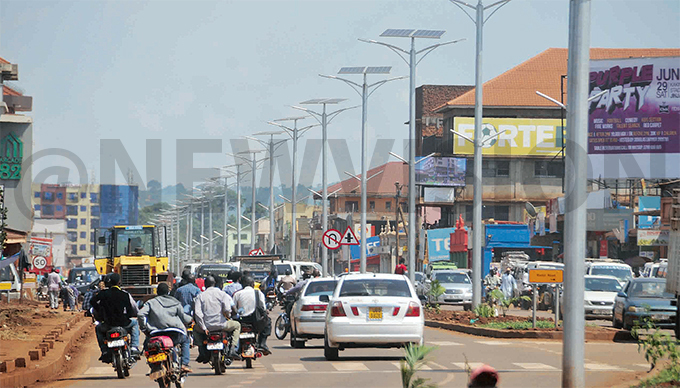 Jinja Main Street during day
Jinja Main Street during day
INFRASTRUCTURE DEVELOPMENT
In just five years, the dark story of Jinja is gradually changing, thanks to Uganda Support to Municipal Infrastructure Development (USMID) programme.
The programme is funded by the World Bank and government. Under the project, Jinja town has benefited from expansion of streets, installation of street lights, rubbish cans, improvement of garbage collection and construction of drainage systems.
The above changes have given Jinja town a face-lift, the reason it is now among those considered to obtain city status. Jinja is not alone, the USMID is also transforming other ghost towns, such as Hoima, Soroti, Mbale and Moroto.
Isaac Musumba, the Minister of State for Urban Development, said the first five years of USMID has enabled the country respond to the development challenges in these municipalities.
Musumba said the challenges associated with unprecedented urbanisation, such as slums, poor sanitation, land degradation and poor infrastructure, among others, created challenges for these municipalities. CLICK HERE FOR MORE ON THIS STORY
A rush back to Hoima
BY PASCAL KWESIGA
Thirty-four years ago Hoima was regarded as a sleepy and backwater town. Nothing significant seemed to happen there.
However, all that changed in an instant when oil was discovered in 2006. In the past, while locals moved out of Hoima because the area was not ideal for investment, it has since become a Mecca of sorts. Suddenly, there is a rush back to Hoima.
Some of those who had disposed of their land, have had to buy just a piece of real estate in the area expensively because the discovery of oil has pushed up the prices. Before 1986, the town had one paved road; the main street.
But there were also a few paved stretches linking to the main street. Indeed, Hoima was not ideal for investment in 1986. There was no hotel in the entire town. What people knew as hotels then were mere restaurants in dilapidated structures.
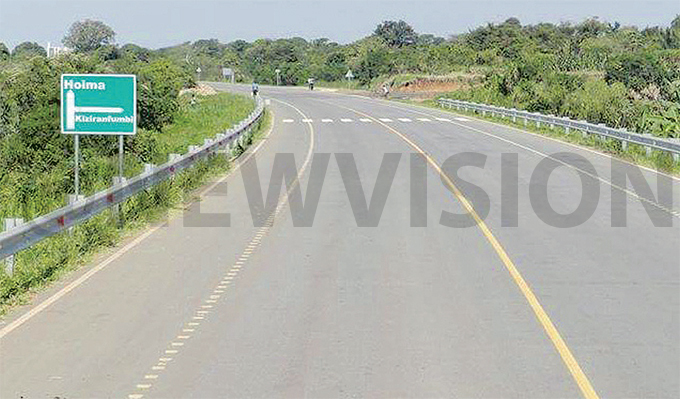 700 KM The surface area covered by the Hoima oil roads. These roads will drive traffic into Hoima town and contribute to its easy accessibility and further development
700 KM The surface area covered by the Hoima oil roads. These roads will drive traffic into Hoima town and contribute to its easy accessibility and further development
"We had no idea that hotels were supposed to look like the huge facilities (hotels) we have today. For us, then, hotels were those small places where we went to eat food," Jackson Nuwamanya, the former Hoima town council speaker, says.
There was only one lodge running under businesses owned by Nsamo brothers. The small accommodation facility shared the same building with other businesses like hardware shops.
The fact that there was one small lodging facility means that there were not many people visiting Hoima for business and other activities at the time. The only hotel - Kolping - was constructed in the early 1990s.
"It belongs to Hoima diocese and it was constructed around 1993. When they were building it, we all wondered who would buy their food. We wondered if one needed to build such a big building for a hotel. It was the first facility to have a hotel and accommodation facilities. Surprisingly, we are the ones who now eat in these hotels," Nuwamanya adds.
Kolping - the only hotel in the town many years ago - now competes with more bigger and fancy hotel facilities in Hoima. CLICK HERE FOR MORE ON THIS STORY
